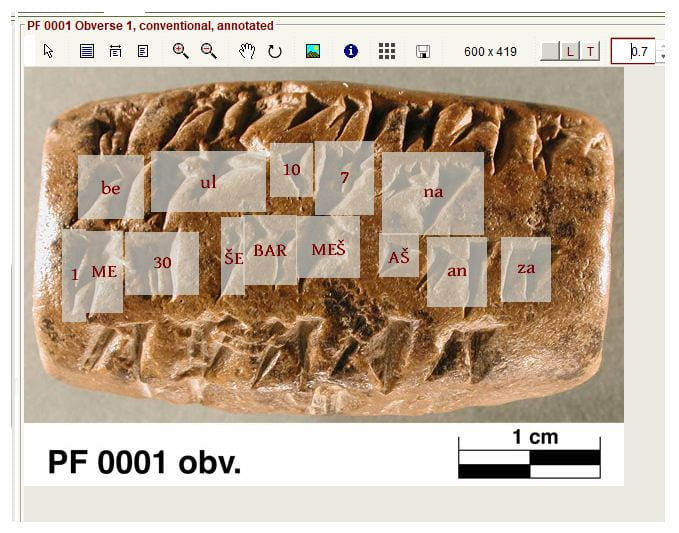DeepScribe Project team
Dr. Sanjay Krishnan Assistant Professor; Department of Computer Science, University of Chicago
Dr. Susanne Paulus Associate Professor of Assyriology; Institute for the Study of Ancient Cultures, University of Chicago
Dr. Miller Prosser Director of Online Publications; Forum for Digital Culture, University of Chicago
Sandra Schloen Director of Technology; Forum for Digital Culture and Manager, OCHRE Data Service, University of Chicago
Dr. Matthew Stolper Professor of Assyriology, Emeritus; Institute for the Study of Ancient Cultures, University of Chicago
Grace Su Undergraduate Research Assistant; Columbia University
Dr. Jeffrey Tharsen Associate Director of Technology; Forum for Digital Culture, University of Chicago
Edward Williams Technical Developer; Machine Learning Engineer, Amgen, Los Angeles, CA

Publications & Presentations
Read the pre-print, “DeepScribe: Localization and Classification of Elamite Cuneiform Signs Via Deep Learning,” posted on arXiv.
Find the code and sample images in the DeepScribe GitHub repository.
Watch Using Computer Vision to Read Elamite Cuneiform Tablets from the Persepolis Fortification Archive given at the ASOR Virtual Meeting (December 2021) in the session “Scribal Hands and Habits in Cuneiform Texts” by researchers Sanjay Krishnan and Miller Prosser.
Watch a CDAC Summer Lab Speaker Series event, Image Analysis + AI (August 2020) where researcher Sandra Schloen describes the DeepScribe project and its current progress.
Watch a CDAC-sponsored Data Dispatch event Deciphering Cuneiform with Artificial Intelligence (April 2020) that explains the goals and strategies of DeepScribe; by researchers Sanjay Krishnan and Miller Prosser.
Manually deciphering a cuneiform tablet is a laborious, time-consuming, and error-prone process. This project explores how recent advances in computer vision can assist researchers by automatically identifying symbols and words in images of cuneiform tablets. It leverages the extensively annotated collections of the Persepolis Fortification Archive project of the Online Cultural and Historical Research Environment (OCHRE) as training data for machine learning vision models that preliminary results suggest are accurate up to 83% of the time. This discovery grant will facilitate an important step towards the goal of meaningful automatic transcription and indexing of the extensive worldwide cuneiform tablet collection.
The DeepScribe project would like to acknowledge, with appreciation, the support of a UChicago CDAC Discovery Grant for the calendar year 2020. Read this CDAC News article (Feb. 12, 2020) to learn more about DeepScribe.
DeepScribe Buzz
How AI could help translate the written language of ancient civilizations (UChicago news)
Deep Learning A.I. is helping archaeologists translate ancient tablets (Digital trends, emerging tech)
The Kings Moleskin (Deeplearning.ai The Batch)
Researchers use AI to translate text found on ancient clay tablets (The Next Web: Neural)
How the secrets of ancient cuneiform texts are being revealed by AI (NewScientist)
AI Deciphers Persian Cuneiform Tablets from 25 Centuries Ago (Synced)
DeepScribe AI Can Help Translate Ancient Tablets (Unite.ai)
With support from …

The Data Science Institute, (formerly CDAC, the Center for Data And Computing), at the University of Chicago, Discovery Grant Project 2019. DeepScribe: Deciphering Cuneiform With Artificial Intelligence.


